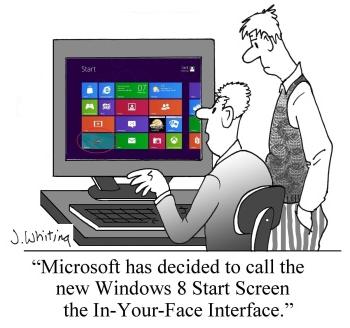 The highly anticipated Windows 8 will be soon available for the public to enjoy; the enthusiasts probably already have their dates marked for the 25th of October when thousand of systems will be upgraded.
The highly anticipated Windows 8 will be soon available for the public to enjoy; the enthusiasts probably already have their dates marked for the 25th of October when thousand of systems will be upgraded.
While there are a lot of people who are going to kill two birds with one stone by taking this opportunity to purchase a brand new PC with Windows 8 preinstalled, the larger percentage of users will prefer to take the upgrade route.
With Microsoft shutting down support for Windows XP SP3 and Office 2003 starting April 4, 2014 the upgrade will be mandatory for a significant number of users and organizations. Why is it mandatory you ask? Well, Microsoft itself explains that continuing to run on the soon to be obsolete versions has a lot of disadvantages. The two major ones are security & compliance risks and the lack of independent software vendor (ISV) & hardware manufacturers’ support. What we mean by security risks is that running on such unsupported environments may lead to control failure which will ultimately lead to (if an organization is involved) the suspension of certifications or even worse case scenarios. The lack of ISV is quite self-explanatory; software vendors are unlikely to provide support on new versions of application for Windows XP even starting this year, and PC hardware manufacturers will stop the support for their new PC models.
So what to do?
First and foremost is ensuring you have all your data backed up. Yes, we know that backing up your data is not usually the most fun of all tasks, and many PC users tend to neglect it, never the less it’s far more important than you think. Backups prove to be invaluable in a number of events, mainly when hard drives fail, a disaster in computing occurs, and in the more relatable case, when upgrading to a newer operating system.
If the sole thought of back up makes you cringe, immediately think of your important pictures, videos and documents and remind yourself that it’s always worth the while to save those.
So contain your upgrade enthusiasm and take the time to consider the best backup solution to save you from any malfunctions that might occur in the middle of an upgrade.
Our recommendation for a smooth transition would be to use Genie Backup Manager; GBM supports Disaster Recovery and thus offers an easy dependable way to recover your system in case of failure during the upgrade since it restores your Windows, Program Files, Documents and Settings and System State.
The backup is so simple and versatile at the same time; if you don’t like the hassle of going out and buying a new hard drive, you can simply pick up any CD and kick start the backup procedure. If you’re more of an online person, then you can always select the cloud option using the highly secure Amazon S3 cloud service provided.
Above all, make sure your hardware match the minimum requirements for the upgrade. To simplify it for you, here they are:
• Processor: 1GHz CPU or faster
• RAM: 1GB (32-bit) or 2GB (64-bit)
• Disk space: 16GB (32-bit) or 20GB (64-bit)
• Graphics: DirectX 9-capable video card with WDDM driver
Stay tuned for more similar posts that will ensure a smooth Windows 8 transition.
